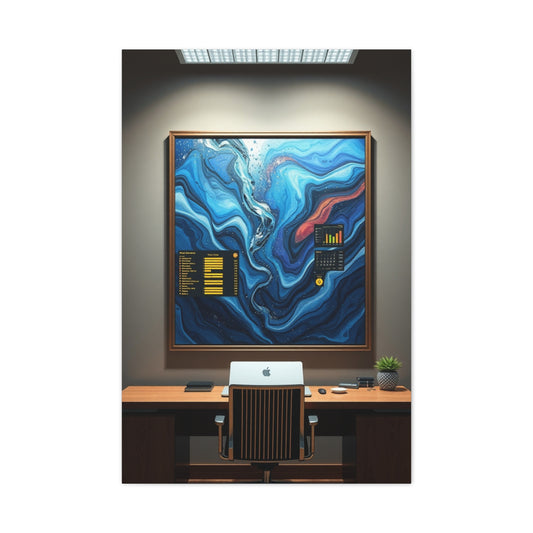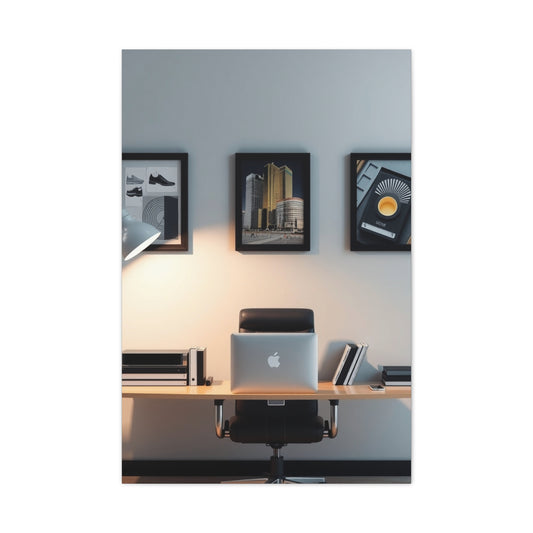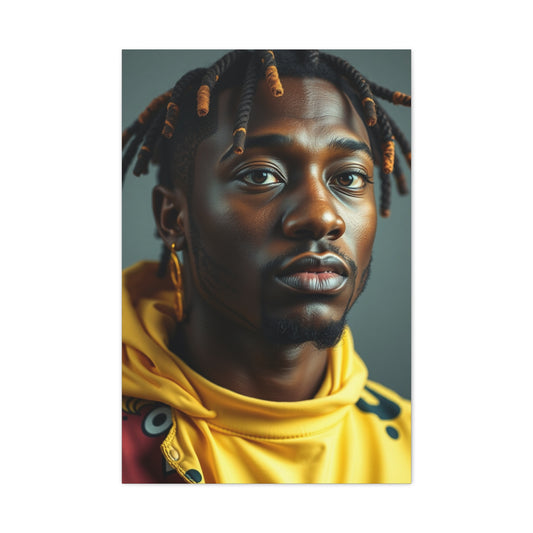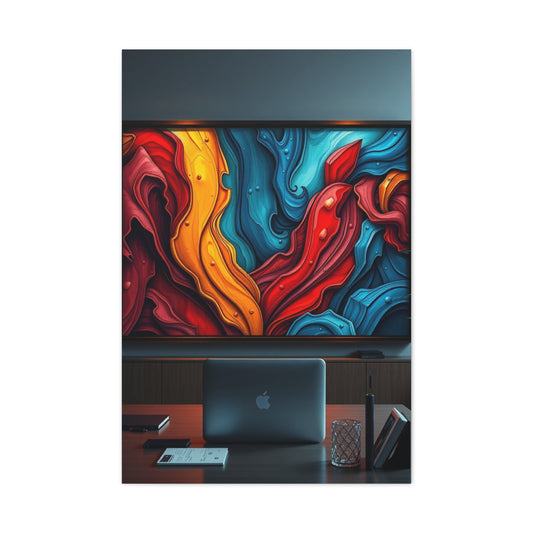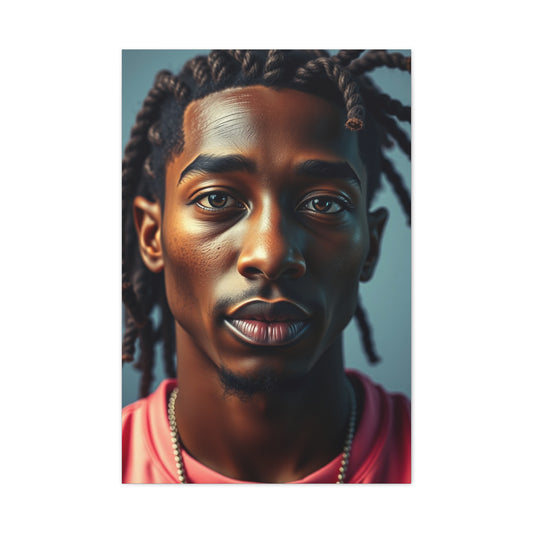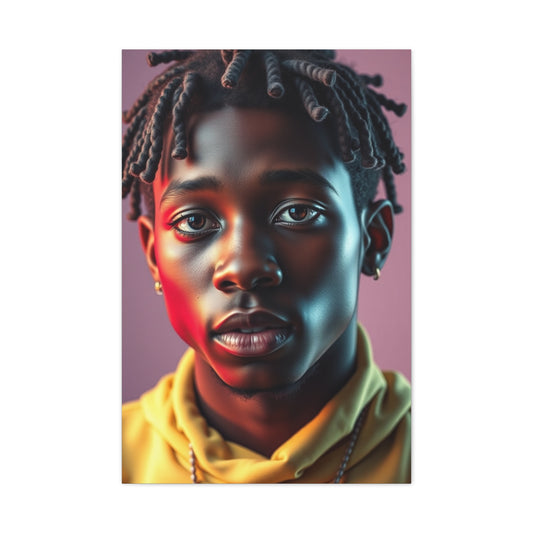Wildlife photography stands as one of the most challenging yet exhilarating disciplines within the broader photographic spectrum, demanding not only technical proficiency and artistic vision but also patience, stealth, and innovative problem-solving abilities. Among the myriad techniques and tools available to contemporary wildlife photographers, few prove as universally beneficial and cost-effective as the humble bean bag support system.
This comprehensive exploration delves deeply into the multifaceted applications, selection criteria, and professional techniques surrounding bean bag utilization in wildlife photography contexts. Whether you're embarking upon your initial forays into nature photography or seeking to refine existing methodologies through enhanced stabilization solutions, understanding the nuanced applications of bean bag systems can dramatically transform your field photography experiences and image quality outcomes.
The evolution of wildlife photography has consistently favored practitioners who demonstrate adaptability, resourcefulness, and willingness to embrace unconventional approaches that prioritize results over traditional methodologies. Bean bag support systems exemplify this philosophy perfectly, offering elegant solutions to complex stabilization challenges while maintaining portability, affordability, and versatility across diverse shooting scenarios.
Contemporary wildlife photographers face unprecedented opportunities alongside equally formidable challenges. Digital sensor technology has democratized access to professional-quality imaging capabilities, while telephoto lens designs continue advancing toward lighter, sharper, and more capable optical systems. However, these technological improvements cannot compensate for fundamental stability requirements that remain constant regardless of equipment sophistication levels.
The psychological aspects of wildlife photography extend far beyond technical considerations, encompassing the profound satisfaction derived from successfully documenting elusive creatures in their natural habitats. This emotional dimension transforms what might otherwise represent mere technical exercises into deeply meaningful encounters that foster appreciation for biodiversity while contributing to conservation awareness through compelling visual storytelling.
Understanding animal behavior patterns, habitat preferences, feeding schedules, and seasonal migrations forms the foundation upon which successful wildlife photography endeavors are constructed. However, even the most comprehensive behavioral knowledge proves insufficient without reliable methods for maintaining camera stability during those crucial moments when extraordinary photographic opportunities present themselves.
The intersection of preparation, patience, and technical execution defines successful wildlife photography outcomes. Bean bag support systems contribute significantly to this equation by eliminating one of the primary variables that frequently compromise image quality: camera shake caused by inadequate support during extended shooting sessions or challenging positioning requirements.
Revolutionary Approaches to Vehicular Wildlife Photography
The utilization of vehicles as mobile blinds represents perhaps the most significant paradigm shift in contemporary wildlife photography methodology. This approach fundamentally alters the traditional relationship between photographer and subject, creating opportunities for intimate documentation that would prove impossible through conventional stalking techniques while simultaneously reducing stress levels experienced by wild animals during photographic encounters.
Vehicular photography transcends simple convenience considerations, addressing fundamental behavioral realities that govern wildlife responses to human presence. Decades of research consistently demonstrate that most wildlife species exhibit significantly reduced flight responses to enclosed vehicles compared to human pedestrians, creating extended observation windows that facilitate superior photographic opportunities.
This behavioral phenomenon stems from evolutionary adaptations that prioritize threat assessment based on recognizable predator characteristics. Humans walking upright trigger instinctive prey responses developed over millennia, while enclosed vehicles present ambiguous stimuli that many species fail to categorize as immediate threats, particularly in areas where vehicular traffic occurs regularly.
The strategic advantages of vehicular photography extend beyond reduced flight responses to encompass practical considerations including weather protection, equipment security, expanded mobility ranges, and enhanced comfort during extended field sessions. These factors combine synergistically to create optimal conditions for patient observation and selective image capture.
Professional wildlife photographers increasingly recognize vehicular platforms as essential components of comprehensive field strategies rather than merely convenient alternatives to traditional stalking approaches. This shift reflects growing appreciation for efficiency maximization in field operations where time constraints, weather conditions, and animal behavior patterns must be carefully coordinated to achieve optimal results.
The transformation of standard passenger vehicles into effective photographic platforms requires minimal modifications while dramatically expanding creative possibilities. Strategic positioning near wildlife corridors, water sources, or feeding areas enables photographers to maintain readiness for spontaneous encounters while conserving physical energy for more demanding shooting scenarios.
Modern wildlife photography benefits enormously from technological integration that enhances traditional vehicular approaches. GPS navigation systems enable precise location recording for future reference, while weather monitoring applications help predict optimal shooting conditions. Digital communication tools facilitate coordination between multiple photographers or guides, maximizing collective success rates.
The economic efficiency of vehicular photography proves particularly appealing for photographers operating under budget constraints or exploring expensive destinations where accommodation costs must be carefully managed. The ability to cover extensive territories efficiently while maintaining mobile base operations significantly reduces per-day operational expenses compared to traditional camping or lodging arrangements.
However, successful vehicular wildlife photography demands comprehensive understanding of legal restrictions, ethical considerations, and environmental impact minimization strategies. Many protected areas impose specific regulations governing vehicle operations, while responsible wildlife photography practices require maintaining appropriate distances regardless of animal tolerance levels.
Advanced Stabilization Principles for Telephoto Wildlife Systems
Contemporary wildlife photography invariably involves telephoto lens systems that magnify not only distant subjects but also every minute movement or vibration transmitted through the camera support system. This amplification effect transforms minor instabilities into significant image degradation, making robust stabilization methodologies absolutely crucial for achieving professional-quality results.
The physics governing telephoto lens stability involve complex relationships between focal length, magnification ratios, exposure duration, and support system characteristics. As focal lengths increase, the angular magnification of camera movements increases proportionally, creating exponentially greater sensitivity to vibrations and requiring correspondingly more sophisticated stabilization approaches.
Traditional tripod systems, while effective for many photographic applications, present significant limitations in vehicular contexts due to setup time requirements, space constraints, and inflexibility during rapidly changing shooting scenarios. These limitations become particularly pronounced during wildlife encounters where optimal compositions may persist for mere seconds before subjects relocate or behavioral opportunities expire.
Bean bag support systems address telephoto stabilization challenges through fundamentally different mechanical principles compared to rigid tripod structures. Rather than providing fixed positioning through mechanical joints and locking mechanisms, bean bags create conforming support surfaces that adapt dynamically to lens contours while providing substantial mass for vibration dampening.
The viscoelastic properties of properly filled bean bags create ideal characteristics for telephoto lens support by combining initial conformability with progressive resistance that increases proportionally to applied forces. This behavior pattern provides stable support for static compositions while allowing controlled movement for tracking moving subjects or adjusting framing during extended shooting sequences.
Professional-grade bean bag systems incorporate sophisticated design elements that optimize performance characteristics for specific wildlife photography applications. These include reinforced construction techniques that maintain durability under repeated heavy loading, specialized fill materials that provide optimal damping characteristics, and ergonomic considerations that facilitate extended shooting sessions without fatigue.
The selection of fill materials significantly influences bean bag performance characteristics, with various options offering distinct advantages for different shooting scenarios. Traditional dried beans provide excellent weight and conformability but may degrade over time in humid conditions. Rice offers similar characteristics with improved moisture resistance, while synthetic alternatives like plastic pellets or specialized beads provide consistent performance across varying environmental conditions.
Advanced practitioners often maintain multiple bean bags filled with different materials to optimize performance for varying shooting requirements. Lighter fills prove advantageous for extended hiking scenarios where weight minimization remains paramount, while heavier fills provide superior stability for extended shooting sessions from fixed positions.
The thermal properties of fill materials also influence long-term performance characteristics, particularly in extreme temperature conditions commonly encountered during wildlife photography expeditions. Some materials may become brittle in freezing conditions or develop moisture retention issues in humid tropical environments, necessitating careful selection based on anticipated usage scenarios.
Comprehensive Evaluation Criteria for Professional Bean Bag Selection
Selecting optimal bean bag systems for wildlife photography applications requires systematic evaluation of multiple performance criteria that significantly influence field effectiveness and long-term satisfaction. Professional photographers develop sophisticated understanding of how design variations affect practical performance through extensive field testing across diverse shooting scenarios and environmental conditions.
The dimensional characteristics of bean bag platforms fundamentally determine compatibility with various lens systems and shooting positions. Platform width must accommodate the specific lens barrels being supported, while depth measurements affect balance characteristics for large telephoto systems. Insufficient depth commonly results in unstable balance points that require constant manual support, negating primary advantages of bean bag utilization.
Contemporary super-telephoto lenses frequently feature substantial dimensions and complex balance points that challenge conventional support systems. Professional-grade bean bags incorporate extended platform dimensions specifically designed to accommodate these demanding optical systems while maintaining optimal weight distribution across the support surface.
The relationship between platform dimensions and lens balance characteristics becomes particularly critical when utilizing lens systems with pronounced front-heavy characteristics or those incorporating substantial filter systems that alter normal balance points. Inadequate platform sizing often results in precarious balance situations that compromise both safety and operational effectiveness.
Mounting system integration represents another crucial evaluation criterion that significantly influences operational flexibility and shooting efficiency. Some bean bag designs incorporate standardized mounting plates that accommodate ball heads, gimbal systems, or specialized wildlife photography supports, while others rely entirely on direct lens contact with the support surface.
The inclusion of mounting hardware increases system versatility but also adds weight, complexity, and cost to the overall package. Professional photographers must evaluate whether enhanced versatility justifies these tradeoffs based on their specific shooting methodologies and equipment preferences.
Weight considerations encompass both filled and empty configurations, with implications for transportation, field mobility, and international travel scenarios. Empty weight affects shipping costs and luggage allowances for destination photography trips, while filled weight determines carrying comfort during hiking approaches and overall system portability.
Advanced materials technology has enabled significant reductions in empty bag weights without compromising durability or performance characteristics. High-strength synthetic fabrics, reinforced stitching techniques, and optimized construction methodologies contribute to superior strength-to-weight ratios compared to traditional canvas or leather alternatives.
Fill capacity specifications determine the total weight range achievable with specific bag designs, directly influencing stability characteristics and carrying requirements. Larger capacity bags provide greater stability potential but may exceed practical weight limits for hiking applications, while smaller bags offer superior portability at the expense of maximum stability potential.
Construction quality evaluation requires assessment of stitching techniques, seam reinforcement methods, material durability characteristics, and overall build quality indicators. Professional wildlife photography subjects bean bag systems to considerable stress through repeated loading, environmental exposure, and transportation handling that can quickly reveal construction weaknesses.
Double or triple stitching techniques provide enhanced durability compared to single-stitch construction, while reinforced stress points and bartacking at critical junctions significantly extend operational lifespan. Quality materials resist ultraviolet degradation, moisture penetration, and temperature-related deterioration that commonly affect outdoor equipment over extended usage periods.
Premium Fill Material Selection and Performance Optimization
The selection of appropriate fill materials represents one of the most critical decisions affecting bean bag performance characteristics, yet it frequently receives insufficient consideration from photographers focused primarily on bag construction quality or dimensional specifications. Understanding the nuanced performance implications of various fill options enables optimization of stability, portability, and durability characteristics for specific shooting requirements.
Traditional dried legumes, including various bean types, provide excellent conformability and weight characteristics that originally established the "bean bag" nomenclature. These organic materials offer superior molding characteristics that create intimate contact with lens surfaces while providing substantial mass for vibration dampening. However, organic fills present certain limitations including moisture sensitivity, potential pest attraction, and gradual deterioration over extended usage periods.
Rice-based fills offer improved moisture resistance compared to traditional beans while maintaining similar weight and conformability characteristics. The smaller grain size of rice enables more intimate surface contact with supported equipment, potentially providing superior stability for lightweight lens systems. Additionally, rice availability in virtually all global markets makes it an ideal fill material for international travel scenarios where local replenishment becomes necessary.
Buckwheat hull fills represent a sophisticated compromise between weight, conformability, and durability considerations. These natural byproducts provide excellent vibration dampening characteristics due to their irregular shapes and resilient properties, while maintaining relatively light weight compared to solid grain alternatives. Buckwheat hulls also resist moisture absorption better than many organic alternatives and provide superior longevity under normal usage conditions.
Synthetic fill materials, including various plastic pellet formulations and specialized polymeric beads, offer consistent performance characteristics unaffected by moisture, temperature variations, or biological degradation. These materials maintain stable properties across extreme environmental conditions commonly encountered during wildlife photography expeditions, from arctic conditions to tropical rainforests.
Polystyrene bead fills provide exceptional light weight characteristics while maintaining adequate stability for moderate telephoto systems. However, their low density may prove insufficient for super-telephoto applications requiring maximum stability, and their static electricity generation can create dust attraction problems in dry environments.
Specialized polymeric pellets designed specifically for photographic applications optimize density, conformability, and static resistance characteristics. These premium fill materials command higher costs but provide superior performance consistency and longevity compared to generic alternatives.
The thermal expansion characteristics of fill materials influence performance consistency across varying temperature conditions. Some synthetic materials exhibit significant volume changes with temperature variations, potentially affecting bag firmness and stability characteristics. Understanding these thermal behaviors enables appropriate fill level adjustments for specific operating conditions.
Hybrid fill combinations incorporate multiple material types to optimize various performance characteristics simultaneously. For example, combining heavier materials in the base portions with lighter fills in upper sections can create graduated density profiles that enhance stability while maintaining overall weight management. Such sophisticated approaches require experimentation to determine optimal ratios for specific applications.
The particle size distribution within fill materials affects both conformability and stability characteristics. Uniformly sized particles may provide consistent feel but can create settlement patterns that affect long-term performance. Mixed size distributions often provide superior long-term stability by creating interlocking arrangements that resist compaction and settling.
Professional photographers often maintain multiple bean bags with different fill configurations to optimize performance for varying shooting scenarios. Lightweight fills prove advantageous for extended hiking approaches, while heavier configurations provide maximum stability for critical shots from fixed positions.
Strategic Material Engineering and Weather Resistance
The fabric materials and construction techniques employed in professional-grade bean bag manufacturing directly influence durability, weather resistance, and long-term performance characteristics under the demanding conditions typically encountered during wildlife photography expeditions. Understanding these material properties enables informed selection decisions that optimize value and performance for specific usage patterns.
Advanced synthetic fabric technologies have revolutionized outdoor equipment performance through engineered characteristics that address specific environmental challenges. Ripstop nylon constructions provide exceptional tear resistance while maintaining minimal weight, making them ideal for hiking-intensive wildlife photography applications where equipment damage from vegetation contact or rough handling poses constant threats.
Polyester-based fabrics offer superior ultraviolet resistance compared to nylon alternatives, making them preferable for extended outdoor exposure in high-altitude or desert environments where solar radiation intensity exceeds normal levels. The improved UV stability translates into extended operational lifespan and maintained structural integrity over years of professional usage.
Canvas materials, while heavier than synthetic alternatives, provide exceptional abrasion resistance and puncture protection that proves valuable in extreme environments or rough handling scenarios. Professional photographers working in thorny vegetation or rocky terrain often prefer canvas construction despite weight penalties due to superior damage resistance characteristics.
Water resistance treatments significantly extend bean bag usability across diverse weather conditions commonly encountered during wildlife photography expeditions. Untreated fabrics quickly saturate during precipitation events, leading to substantial weight increases, extended drying times, and potential fill material deterioration that compromises long-term performance.
Durable Water Repellent (DWR) treatments create microscopic surface modifications that cause water droplets to bead and roll off rather than penetrating fabric structures. These treatments maintain breathability while providing substantial protection against light precipitation and humidity-related moisture accumulation.
Fully waterproof constructions incorporating sealed seams and waterproof zippers provide maximum protection against moisture penetration but typically sacrifice breathability and increase weight significantly. Such constructions prove most appropriate for marine environments or extended expedition scenarios where moisture protection takes precedence over weight considerations.
The breathability characteristics of bag materials affect moisture management within filled bags, particularly important when using organic fill materials susceptible to mold or mildew development. Vapor-permeable constructions allow internal moisture to escape while preventing external moisture penetration, optimizing long-term fill material preservation.
Reinforcement techniques at critical stress points significantly extend operational lifespan under professional usage conditions. Bartacking at strap attachment points, double-folded seam construction, and reinforcing patches at wear areas prevent premature failure modes that commonly affect budget-oriented products under demanding usage patterns.
The chemical resistance characteristics of materials affect performance in diverse environmental conditions. Some synthetic materials degrade rapidly when exposed to certain chemicals, saltwater, or extreme pH conditions commonly encountered in specific habitats. Understanding these limitations prevents equipment failures during critical shooting opportunities.
Color selection influences both practical performance and aesthetic considerations. Earth-tone colors provide camouflage advantages in natural environments while hiding soil and vegetation stains that inevitably accumulate during field usage. However, bright colors enhance visibility for location identification and recovery in dense vegetation or low-light conditions.
Professional Mounting System Integration and Versatility Enhancement
Advanced bean bag designs increasingly incorporate sophisticated mounting systems that dramatically expand operational versatility while maintaining the fundamental advantages of conforming support surfaces. These integrated systems enable seamless compatibility with professional head systems, specialized wildlife photography accessories, and modular support configurations that adapt to varying shooting requirements.
Arca-Swiss compatible mounting plates represent the current standard for professional photographic support systems, providing universal compatibility across diverse head manufacturers and specialized accessories. Bean bags incorporating these standardized interfaces enable direct compatibility with existing equipment inventories while maintaining upgrade pathways as requirements evolve.
The integration of mounting hardware necessarily increases system weight and complexity but provides substantial operational advantages that justify these tradeoffs for serious wildlife photographers. Quick-release mounting systems enable rapid equipment changes between handheld shooting and supported configurations, maximizing responsiveness during dynamic wildlife encounters.
Gimbal head compatibility proves particularly valuable for wildlife photography applications involving large telephoto systems where precise tracking of moving subjects becomes paramount. Traditional bean bag configurations limit tracking capabilities due to friction between lens surfaces and support materials, while integrated mounting systems provide smooth, controlled movement with proper gimbal head selection.
Ball head integration offers enhanced flexibility for static compositions while maintaining the vibration dampening advantages of bean bag support systems. The combination of ball head positioning versatility with bean bag stability characteristics creates hybrid systems that address diverse shooting requirements within single configurations.
Modular mounting systems enable configuration optimization for specific shooting scenarios through interchangeable components. Base plates, extension arms, and specialized adapters create customized solutions that address unique requirements while maintaining compatibility with standard bean bag bodies.
The load-bearing capacity of integrated mounting systems must align with the substantial weights of professional telephoto systems commonly employed in wildlife photography. Inadequate mounting hardware quickly fails under the combined stresses of heavy equipment and dynamic loading conditions, potentially causing expensive equipment damage.
Professional mounting systems incorporate safety features including secondary retention mechanisms, load distribution plates, and positive locking indicators that prevent accidental disconnection during critical shooting moments. These features prove essential when working with expensive telephoto systems in challenging field conditions.
The height adjustability provided by mounting systems enables optimization of shooting positions for varying vehicle configurations, shooting scenarios, and photographer preferences. Extension capabilities particularly benefit photographers of different statures or when accommodating varying door frame heights and window configurations.
Quick-adjustment mechanisms facilitate rapid reconfiguration between different shooting positions without requiring complete system teardown and reinstallation. These capabilities prove crucial during wildlife encounters where optimal positioning may change rapidly as animal behavior patterns evolve.
Advanced Application Methodologies and Professional Techniques
Professional wildlife photographers develop sophisticated methodologies for optimizing bean bag performance across diverse shooting scenarios, vehicle configurations, and environmental conditions. These advanced techniques often distinguish amateur applications from professional-level implementations that maximize both image quality and operational efficiency.
Window-based shooting configurations represent the most common bean bag applications but require understanding of specific positioning principles that optimize stability while maintaining operational flexibility. The relationship between bean bag placement, lens balance points, and photographer ergonomics significantly influences shooting comfort and image quality outcomes.
Proper bean bag positioning typically involves creating stable triangular support configurations where the bag conforms to both the window frame and lens barrel simultaneously. This dual-contact arrangement distributes loads effectively while minimizing movement transmission from vehicle vibrations or photographer movements.
The window opening width relative to lens diameter affects stability characteristics and positioning options. Narrow openings may create pinch points that increase vibration transmission, while excessively wide openings reduce lateral support and allow unwanted lens movement during composition adjustments.
Different vehicle types present unique advantages and limitations for bean bag-based photography. Low-riding sports cars provide minimal window height that may compromise shooting angles, while elevated SUVs and pickup trucks offer superior vantage points but may create different stability challenges.
Sunroof mounting configurations enable overhead shooting positions that prove particularly effective for photographing ground-dwelling species or creating unique perspective shots. However, these configurations require specialized bag designs and mounting approaches to maintain stability in unsupported overhead positions.
Hood-mounted applications expand shooting possibilities beyond window-based configurations while creating elevated platforms that improve sight lines over vegetation or terrain obstacles. These applications require different bag characteristics due to the absence of lateral support structures typical of window mounting scenarios.
Ground-level shooting techniques utilizing bean bags enable low-perspective photography that creates intimate viewpoints particularly effective for small wildlife subjects. Proper bag selection and positioning techniques maximize comfort during extended prone shooting sessions while maintaining equipment protection.
Fence post and natural support applications demonstrate bean bag versatility in situations where traditional tripod mounting proves impractical or impossible. Understanding load distribution principles and safety considerations prevents equipment damage while expanding shooting location possibilities.
Tracking movement techniques with bean bag-supported systems require understanding of friction characteristics and movement limitations inherent in direct lens contact configurations. Professional techniques include partial hand support that enables controlled movement while maintaining primary stability through bag contact.
The integration of Image Stabilization (IS) or Vibration Reduction (VR) systems with bean bag support requires understanding of potential interaction effects. Some lens-based stabilization systems may actually introduce instability when combined with certain support configurations, necessitating selective activation strategies.
Environmental Adaptation and Extreme Condition Performance
Wildlife photography expeditions frequently encounter extreme environmental conditions that challenge both equipment performance and photographer endurance. Professional-grade bean bag systems must demonstrate reliable operation across temperature ranges, humidity levels, and exposure conditions that exceed normal outdoor equipment specifications.
Arctic and high-altitude applications present unique challenges including extreme cold temperatures that affect material flexibility, moisture condensation issues, and snow infiltration problems. Understanding these environmental impacts enables appropriate equipment selection and usage technique modifications that maintain operational capability in demanding conditions.
Low-temperature material behavior varies significantly between fabric types and fill materials. Some synthetic fabrics become brittle and prone to cracking at extreme low temperatures, while certain fill materials may freeze into solid masses that eliminate conforming characteristics. Professional applications in arctic environments require materials specifically rated for extreme cold performance.
Condensation formation represents a significant challenge in cold environments where equipment transitions between heated vehicles and frigid exterior conditions. Proper moisture management techniques prevent ice formation that can damage equipment or render bean bags unusable during critical shooting opportunities.
High-temperature applications, particularly in desert environments, create different challenges including thermal expansion of fill materials, fabric degradation from intense solar radiation, and potential heat transmission to sensitive camera equipment. Understanding these thermal effects enables appropriate usage modifications and equipment protection strategies.
The thermal conductivity of different fill materials affects heat transfer characteristics that can influence camera performance in extreme temperatures. Some materials act as thermal insulators that protect equipment from temperature extremes, while others may conduct heat efficiently enough to affect internal camera temperatures.
Humidity and moisture management proves critical in tropical environments where persistent high humidity levels can promote mold growth in organic fill materials and fabric degradation. Proper ventilation techniques and moisture control strategies maintain equipment functionality across extended tropical expeditions.
Saltwater environments create corrosive conditions that rapidly degrade certain materials and hardware components. Marine wildlife photography applications require specific material selections and maintenance protocols that address these accelerated degradation mechanisms.
Dust and particle infiltration in arid environments can compromise fill material characteristics and create abrasive conditions that damage equipment surfaces. Proper sealing techniques and maintenance procedures maintain operational capability in challenging dusty conditions.
Wind resistance characteristics become critical in exposed locations where sustained high winds create stability challenges and safety concerns. Understanding wind loading effects and appropriate tie-down techniques prevent equipment loss while maintaining shooting capability in breezy conditions.
Economic Considerations and Value Optimization
Professional wildlife photography equipment investments require careful economic analysis that balances performance capabilities against cost considerations and expected operational lifespan. Bean bag systems present particularly attractive value propositions due to their relatively modest initial costs combined with substantial performance improvements and extended operational lifespans.
The cost-per-performance ratio of quality bean bag systems typically exceeds that of many other photographic accessories due to their broad applicability, minimal maintenance requirements, and substantial image quality improvements. This economic efficiency makes them particularly attractive for photographers operating under budget constraints or those beginning serious wildlife photography pursuits.
Comparative analysis between bean bag systems and alternative support solutions reveals significant economic advantages in most applications. Professional gimbal head systems may cost ten to twenty times more than quality bean bags while providing similar stability benefits in many shooting scenarios, making bean bags attractive alternatives for budget-conscious photographers.
The modular nature of bean bag systems enables incremental investment strategies where photographers can begin with basic configurations and expand capabilities over time through accessory additions or upgrades. This approach spreads investment costs while enabling capability growth aligned with developing expertise and expanding requirements.
International travel cost implications favor bean bag systems due to their empty weight characteristics and fill material availability worldwide. Traditional support systems add substantial weight to luggage allowances and may require expensive overweight fees, while empty bean bags travel efficiently and enable local fill material procurement at destinations.
Rental market dynamics for professional support equipment favor ownership of bean bag systems due to their extended utility periods and minimal wear characteristics. Rental costs for professional gimbal systems or specialized supports can quickly exceed bean bag purchase prices during extended shooting projects or expedition photography.
Maintenance cost considerations strongly favor bean bag systems due to their simple construction and absence of complex mechanical components that require professional servicing. Traditional mechanical support systems may require periodic maintenance, adjustment, or repair that adds to long-term ownership costs.
Depreciation characteristics of bean bag systems typically demonstrate superior value retention compared to complex mechanical alternatives due to their fundamental simplicity and continued functionality over extended periods. Well-maintained bean bags often provide decades of reliable service with minimal performance degradation.
The opportunity cost analysis of bean bag adoption typically demonstrates positive returns through improved image quality, increased shooting efficiency, and enhanced shooting comfort that enable longer productive sessions. These intangible benefits often justify initial investments through improved photographic outcomes and reduced physical fatigue.
Conclusion
Bean bag support systems represent one of the most significant yet underappreciated innovations in contemporary wildlife photography, providing elegant solutions to complex stability challenges while maintaining affordability, versatility, and ease of use that appeals to photographers across all skill levels and budget ranges.
The comprehensive evaluation criteria, advanced application techniques, and professional methodologies presented throughout this analysis demonstrate that bean bag systems deserve serious consideration as essential components of professional wildlife photography equipment inventories. Their unique combination of performance benefits, economic advantages, and operational simplicity creates compelling value propositions that few alternative support systems can match.
Success in wildlife photography increasingly depends upon photographer ability to adapt quickly to changing conditions while maintaining technical excellence under challenging circumstances. Bean bag systems excel in these demanding environments by providing reliable performance without complex setup requirements or mechanical failure points that compromise critical shooting opportunities.
The future evolution of bean bag technology promises continued improvements through advanced materials, innovative designs, and potential technology integration that will enhance performance while preserving the fundamental simplicity that defines this support category. Professional wildlife photographers who embrace these developments while mastering current techniques will maintain competitive advantages in increasingly demanding markets.
Ultimately, the decision to incorporate bean bag systems into wildlife photography workflows represents an investment in both immediate performance improvement and long-term shooting capability enhancement. The modest financial investment required typically generates returns through improved image quality, increased shooting comfort, and expanded creative possibilities that justify the initial cost many times over throughout extended photographic careers.











